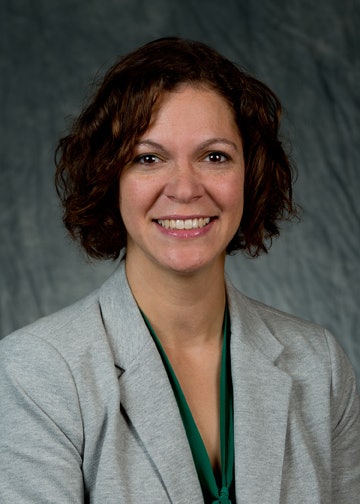While compliance and improvement are the predominant driving factors for measuring student learning in higher education, a recent survey by the National Institute for Learning Outcomes Assessment (NILOA) demonstrates greater emphasis on equity.
Assessment that Matters: Trending Toward Practices That Document Authentic Student Learning presents a national picture regarding the assessment of student learning on college and university campuses. Conducted in the spring and summer of 2017, this third nationwide survey reflects responses from the provosts of 811 regionally accredited, undergraduate degree-granting institutions across the United States.
 Dr. Natasha Jankowski
Dr. Natasha JankowskiCo-located at the University of Illinois and Indiana University, NILOA was established in 2008 and conducted the survey in 2009 and 013. NILOA helps institutions explore, develop and implement assessment practices that benefit student learning outcomes. The objective is for institutions of higher learning to strengthen undergraduate education.
NILOA director Dr. Natasha Jankowski said that examining how institutions engage in meaningful analysis of learning provides information that can help educators improve their teaching practices and support of students. The goals of increasing outcomes and advancing equity require insight into authentic learning.
Among the major findings is that a majority of institutions have statements of learning for all undergraduate students, and a growing number have aligned learning throughout the institution. Assessment continues to be driven by both compliance and improvement, with an emphasis on equity.
“Regional accreditation has been a very important driver for engaging in assessment practices,” said Jankowski, noting a constant across all three surveys. “Where we have seen some change is how institutions are going about looking at student learning and what they need to do to accomplish it.”
Jankowski said responses have shown an evolution in institutional thinking to more thoughtfully examining how a college or university can best support faculty and staff in accomplishing their goals. Professional development is highly important, in addition to the realization that learning happens in and out of the classroom and that there needs to consideration of student affairs and other support services.
Institutions are trending toward greater use of authentic measures of student learning, including rubrics, classroom-based performance assessments and capstones.
“When we talk about learning outcome metrics, it’s how we know that the learning happened and what kind of learning is going on,” said Jankowski. “What we see is a wide range. Institutions are using a variety of approaches to get a more holistic picture of their student learning.”
There have been fewer standardized tests, and institutions are becoming more willing to share what quality learning looks like. These practices often are embodied by minority-serving institutions (MSIs) in the report, which appear to be more likely than predominantly white institutions (PWIs) to publicly share information on learning outcomes, plans, resources, current activities, results and examples of change.
Jankowski said the powerful examples set by MSIs should be respected, understood and potentially utilized at PWIs as meaningful approaches that are responsive to student need and success.
“[MSIs] are already realizing the student success efforts that other institutions are trying to implement,” said Jankowski. “We have wonderful examples that…we can start to bring into the dialogue in more meaningful ways. Instead of PWIs trying to figure out how other PWIs are doing this work, learn from the places that are doing it really well and are being thoughtful about their approaches to embedding meaningful learner engagement throughout their institutions — not in pockets or in a diversity course.”
Communicating effectively about student learning is still challenging. The report notes that colleges and universities must more clearly and persuasively communicate relevant, timely and contextualized information. Throughout the report are sidebars that provide information on available resources that can assist with the development and implementation of meaningful assessment efforts. One such report is NILOA’s Equity and Assessment: Moving Towards Culturally Responsive Assessment.
Jankowski said a good use of NILOA survey reports is as an introduction to new ideas and a frame of reference to how other institutions may handle assessment. Institutions can gauge how they align with survey results.
“A lot of times in assessment, we feel like we’re alone and our institution is so unique,” said Jankowski. “It’s very helpful to see that you aren’t and other people share the struggles. There are other places that can be examples. There are resources available. There is a suite of things available to folks to think meaningfully about their work.”
Jankowski said that the NILOA project at https://www.learningoutcomesassessment.org/ is a helpful tool that sets out best practices in assessment and reflects diversity.





















